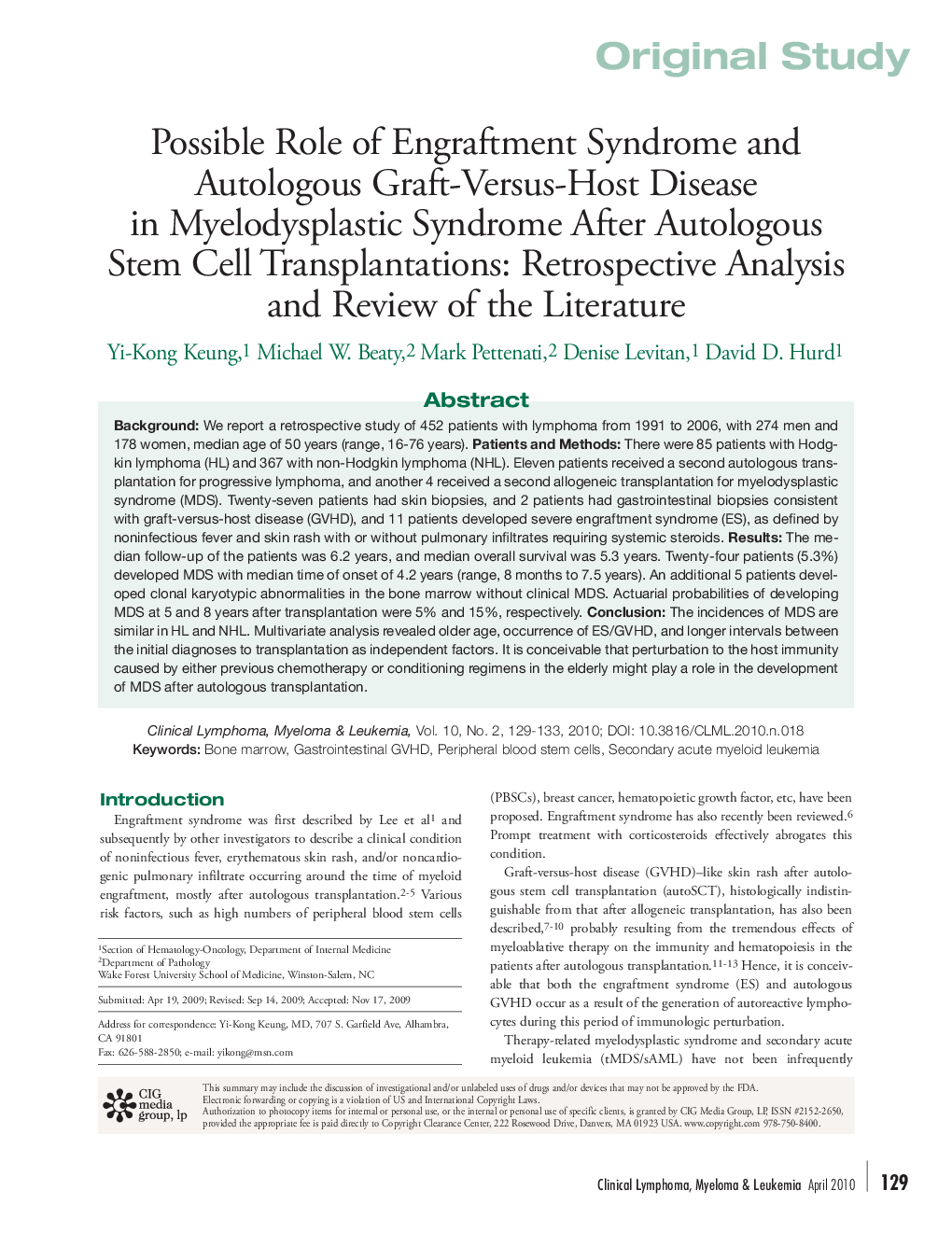| Article ID | Journal | Published Year | Pages | File Type |
|---|---|---|---|---|
| 2755420 | Clinical Lymphoma Myeloma and Leukemia | 2010 | 5 Pages |
Background:We report a retrospective study of 452 patients with lymphoma from 1991 to 2006, with 274 men and 178 women, median age of 50 years (range, 16-76 years).Patients and Methods:There were 85 patients with Hodgkin lymphoma (HL) and 367 with non-Hodgkin lymphoma (NHL). Eleven patients received a second autologous transplantation for progressive lymphoma, and another 4 received a second allogeneic transplantation for myelodysplastic syndrome (MDS). Twenty-seven patients had skin biopsies, and 2 patients had gastrointestinal biopsies consistent with graft-versus-host disease (GVHD), and 11 patients developed severe engraftment syndrome (ES), as defined by noninfectious fever and skin rash with or without pulmonary infiltrates requiring systemic steroids.Results:The median follow-up of the patients was 6.2 years, and median overall survival was 5.3 years. Twenty-four patients (5.3%) developed MDS with median time of onset of 4.2 years (range, 8 months to 7.5 years). An additional 5 patients developed clonal karyotypic abnormalities in the bone marrow without clinical MDS. Actuarial probabilities of developing MDS at 5 and 8 years after transplantation were 5% and 15%, respectively.Conclusion:The incidences of MDS are similar in HL and NHL. Multivariate analysis revealed older age, occurrence of ES/GVHD, and longer intervals between the initial diagnoses to transplantation as independent factors. It is conceivable that perturbation to the host immunity caused by either previous chemotherapy or conditioning regimens in the elderly might play a role in the development of MDS after autologous transplantation.
